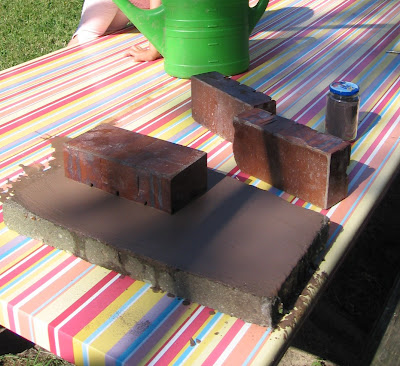I went to the Alexandra Palace show at the weekend which was quite interesting. Too many machines, plenty of dramatic woodturning and quite a few stalls of interest to me with my Luddite tendencies.
I got talking to John LLoyd on the CHT stand and was easily tempted into buying a pair of waterstones as I haven't been totally convinced by my scary sharp efforts over the last couple of years. This stems from both the time it takes working up the grades and its relatively high maintenance. He also gave me the confidence to put aside my jigs and to try to sharpen by hand.
Anyway, first impressions are very positive. First an initial hollow grind with school's Tormek and then by hand on just 1000 and 8000 waterstones. So I have cut out quite a few steps on the grit ladder and am no longer setting the blade in a jig. All my efforts have been with wide plane blades and have yet to try anything narrow. I think things are significantly sharper and I haven't had much practice yet.
However, my reason for posting on this thread is to ask whether anyone has any experience of the Norton flattening stone. Earlier posters referred to poor reports on the Ice Bear version so some advice on this alternative would be appreciated. I am currently using an old DMT coarse bench stone but wonder how long it will last.
(Another plus to the show for a beginner like me was to see RC in the flesh).
thanks
Simon
I got talking to John LLoyd on the CHT stand and was easily tempted into buying a pair of waterstones as I haven't been totally convinced by my scary sharp efforts over the last couple of years. This stems from both the time it takes working up the grades and its relatively high maintenance. He also gave me the confidence to put aside my jigs and to try to sharpen by hand.
Anyway, first impressions are very positive. First an initial hollow grind with school's Tormek and then by hand on just 1000 and 8000 waterstones. So I have cut out quite a few steps on the grit ladder and am no longer setting the blade in a jig. All my efforts have been with wide plane blades and have yet to try anything narrow. I think things are significantly sharper and I haven't had much practice yet.
However, my reason for posting on this thread is to ask whether anyone has any experience of the Norton flattening stone. Earlier posters referred to poor reports on the Ice Bear version so some advice on this alternative would be appreciated. I am currently using an old DMT coarse bench stone but wonder how long it will last.
(Another plus to the show for a beginner like me was to see RC in the flesh).
thanks
Simon




































